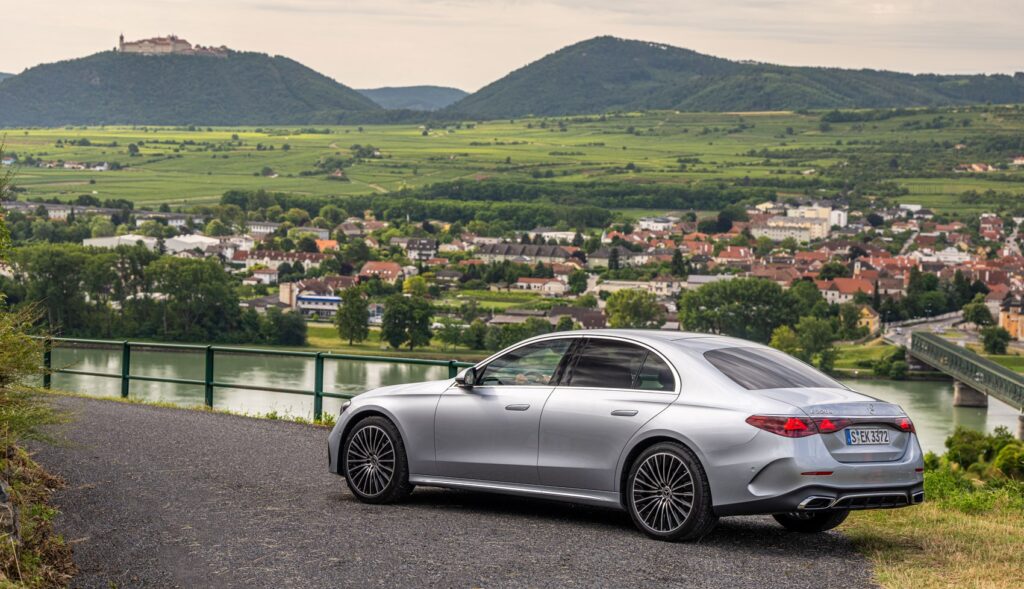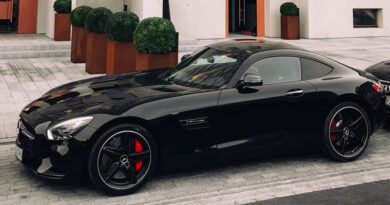
Mini Mercedes New Car review
Mercedes E-Class (2023) review: a mini S
Now more than arguably any other generation, Mercedes-Benz’s E-Class bites fiercely on the heels of its bigger Sonderklasse sibling. So much so that the executive saloon, now in its W214 generation, benefits from technology not even seen in the luxo-limo.
Here, we drive the mild hybrid petrol and diesel variants of the E-Class saloon. Interested in the plug-in hybrid model? We’ve driven it separately here.
So, what’s new with the W214?
The platform and engine range might, at first glance, seem rather familiar. The E-Class runs on Merc’s MRA platform (albeit on MRA2, a revised version for a new generation of cars, including the latest C, GLC and S) and the engines initially available in the UK are the E200 petrol and E220d (as well as the E300e plug-in hybrid). All of the initial cars coming to the UK use four-cylinder engines with mild hybrid assistance, and drive power to the rear wheels via a nine-speed auto. A six-cylinder E450d is confirmed to launch in the UK later in the year, and 4Matic all-wheel drive models may also make their way over, too.

Design-wise, the E continues Merc’s trend of looking-quite-familiar-while-also-different-enough evolution. The biggest differences are at the front, with curvy headlights and an almost badger-like face on AMG Line models (the only trim we’ll get in the UK); and at the rear, where the lighting signatures include red DRLs that wrap around three-pointed stars. The S-Class’ pop-out doorhandles feature here, too.
Inside, it’s very much a mini S with an impressive array of materials used. There’s a satisfying thunk to the door pulls, non-tacky clicks to the indicator stalks and some sweet veneers and leathers (Artico or real) applied liberally.
But where the E-Class really smacks us around the chops is with the technology offered. The E debuts with Merc’s new MB.OS – an entirely self-developed infotainment system and software infrastructure which has been loaded with apps, services and content platforms. And it all rests neatly in Merc’s new Superscreen.

As you may have already guessed, Superscreen is a smaller version of Merc’s Hyperscreen that launched first in the EQS electric car, and incorporates a large central touch screen as well as a passenger display. The system allows for the installing of apps and games, and our test cars came pre-loaded with things like Angry Birds to play while you’re parked, or Webex and Zoom video calling services (which work with the dashboard-mounted camera) which allows you to take video calls (again, only while parked). Even the ambient lighting can react to the music you’re playing through the (likely optional) high-end audio system that includes Dolby Atmos.
And that’s not all. Merc has equipped the E with all the latest safety tech, including systems that alert you to cars/cyclists/pedestrians passing if you reach open your door, and optional digital light systems that display graphics on the road ahead. There’s even a new lane change assistant that, when the car’s drive assist systems are active on the motorway, will even overtake or change lanes for you without you even prompting it. We’ve tried it, and it’s spookily impressive.
How does it drive when you’re at the wheel?
Let’s start with the engines. We’ve tested the E200 petrol and E220d diesel here and, while both aren’t massively inspiring in terms of the power or sound they provide, they give you enough oomph and are capable of impressive efficiency. The E200 petrol accelerates smoothly, with a slightly raspy engine growl (which is augmented in Sport mode to sound like an AMG A45), and that very traditional diesel engine hasn’t gotten any less gruff between generations.

Frustratingly, however, all of the cars we tested in Austria came equipped with Airmatic air suspension and rear-wheel steering – engineering and chassis improvements that aren’t coming to the UK market. Which is a shame, because the Es we drove all felt remarkably planted at speed and felt much smaller to manoeuvre than their footprint suggests. The trade-off is twitchy steering, even at higher speeds. And the twitchiness continues with the throttle modulation, which felt a little half-baked. A gentle prod at some speed induced a three-gear downshift at times, sending the revs climbing and… not a huge amount of progress made.

Where the E really does impress is rolling refinement – as you’d expect. The E remains a remarkable cruiser, built for cutting cleanly through the air at a considerable pace, riding smoothly and dulling any serious road or tyre noise. These aren’t cars to be thrown around, and excel much more at a gentle waft.
Mercedes E-Class: verdict
We still can’t entirely comment on how UK-spec E-Class models will handle, as they’ll be on steel springs and likely without Merc’s trick rear-steer tested in Europe.
But the E reaffirms its position as the refined choice in the exec segment and throws every possible bit of tech at you that it can.
Is it all too much? Maybe, but you’ll be too busy autonomously lane changing while fiddling around with the E’s endless settings to notice.


